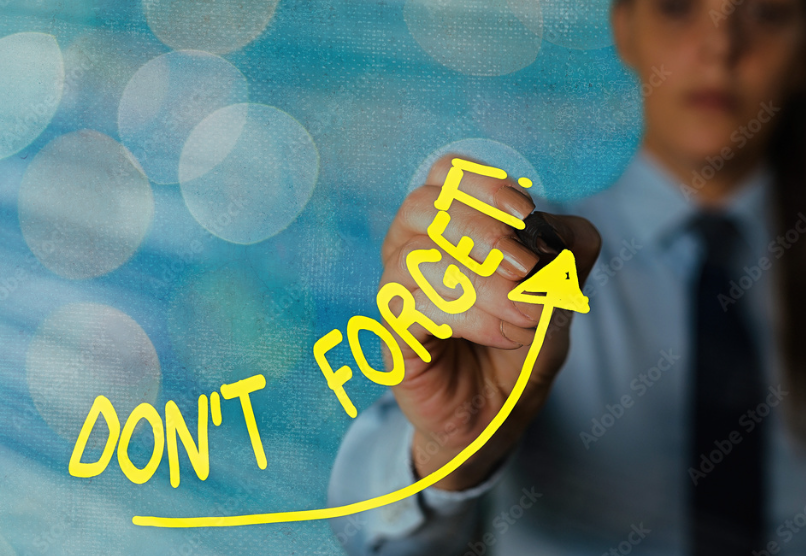Overcoming the Forgetting Curve: Strategies for Effective Learning

In the ideal world, learning would be as simple as reading or studying something once and retaining it forever, akin to how a computer’s memory functions. Unfortunately, reality paints a different picture. Research reveals a stark truth: about 90% of what we learn is destined to fade away within a mere month. This phenomenon, known as the forgetting curve, came under the scrutiny of the renowned German psychologist Hermann Ebbinghaus back in 1885. It highlights the challenge of retaining information over time. In this comprehensive blog, we will explore strategies that empower students to conquer the forgetting curve, ensuring that their educational endeavours result in enduring knowledge.


Understanding the Forgetting Curve
At the core of this issue lies the forgetting curve, a concept pioneered by Hermann Ebbinghaus. This curve graphically illustrates how information dissipates from memory over time when not actively reinforced. Numerous factors influence this process, such as memory strength, the significance of the material, and stress levels. The critical insight here is that the most significant drop in retention occurs shortly after the initial learning experience. Without diligent review and reinforcement, knowledge rapidly wanes, leaving us perplexed.
Overcoming the Forgetting Curve: Strategies for Effective Learning
Let’s delve into strategies for conquering the formidable forgetting curve in the realm of effective learning. First and foremost, active engagement with the material through regular discussions and debates can significantly reinforce memory retention.
Furthermore, collaborative learning environments, where diverse perspectives are shared, can provide valuable insights and enhance comprehension. Employing multimedia resources like videos and interactive simulations can also be an asset in this endeavour. Lastly, tracking your progress and adjusting your study methods accordingly can fine-tune your approach, ensuring that knowledge is retained and not lost to the unforgiving curve of forgetfulness.

3 R’s Strategy: Reflect, Review, Reinforce
Let’s engage in a conversation about the 3 R’s strategy for effective learning: Reflect, Review, Reinforce. “Reflect” prompts learners to introspect and connect new information to existing knowledge, fostering a deeper understanding and critical thinking. “Review” involves regular revision to strengthen memory retention and prevent knowledge from fading over time.

“Reinforce” emphasizes the application of learned concepts through practice, which solidifies comprehension and skills. By integrating these three elements into your learning process, you create a potent toolkit for conquering the forgetting curve and achieving long-lasting knowledge mastery, making it an invaluable approach for anyone striving to enhance their learning outcomes.

Reflect: What Have I Learned?
The journey to overcoming the forgetting curve begins immediately after a class lecture or study session. Engage in reflection by asking yourself what you’ve learned. This simple yet potent exercise serves as the foundation for retention.
Review: Key Takeaways
Within 24 hours, embark on a comprehensive review of your recent learning. Failure to do so may result in the loss of up to 80% of the acquired knowledge. This swift review ensures that information is not entirely forgotten and creates a bridge to deeper understanding.
Reinforce: Solidify Your Knowledge
To strengthen memory retention, adopt a spaced retrieval practice. Regularly revisit and rehearse the lessons, spreading them over specific intervals such as 7 days, 30 days, 60 days, 90 days, and 180 days leading up to exams. This technique counters the forgetting curve by reinforcing learned material at strategic intervals.

7 Strategies to Retain What You Learn
Let’s examine the seven knowledge-retention techniques.
1. Self-Testing: Active Recall
“Retrieval Practice” involves actively recalling and practising the information you’ve learned. It stands as one of the most effective ways to strengthen memory. Dedicate a few minutes at regular intervals to review your notes, thus keeping the information fresh in your memory.

This technique introduces the concept of retrieving and reviewing information at regular intervals over time. It acts as a safeguard against the rapid erosion of memory associated with the forgetting curve. Through disciplined “spaced retrieval,” you can effectively counteract the curve’s deleterious effects and ensure knowledge retention.
3. Teach Others: Explaining Deepens Understanding
Explaining a concept to someone else is a powerful learning tool. When you teach others, you reinforce your own understanding of the material. It’s like cementing the knowledge in your memory. This strategy not only helps you remember better but also deepens your comprehension.
4. Mnemonic Devices: Memory Aids
Mnemonic devices are memory aids that make information easier to remember. These can include acronyms, rhymes, or visual associations. For instance, “PEMDAS” is a mnemonic to remember the order of operations in mathematics (Parentheses, Exponents, Multiplication and Division, Addition and Subtraction). Using such devices can help counteract the forgetting curve by providing mental cues for recall.
5. Spaced Learning: Gradual Knowledge Absorption
Spaced learning is a potent technique that helps combat the forgetting curve. It involves revisiting and reviewing information at intervals. Instead of cramming all your study into one session, break it up into shorter, spaced-out sessions over several days or weeks. Each review strengthens your memory and extends the forgetting curve, making it more gradual.
6. Take Regular Breaks: Prevent Burnout
Continuous studying for hours can lead to mental fatigue and a steep forgetting curve. To optimize learning, take short breaks every 20-30 minutes during your study sessions. This practice helps maintain focus and prevents burnout. It’s like giving your brain a chance to recharge, making it more receptive to new information.
7. Make It Relevant: Context Matters
The human brain is selective, tending to remember information that is relevant to our lives. To counter the forgetting curve, make the course content relevant to your daily tasks or job function. If learners see the value and applicability of the knowledge, they are more likely to remember it.
Conclusion
While the forgetting curve poses a natural challenge to our efforts to retain information, students have at their disposal a repertoire of strategies to substantially enhance memory retention. Learning is a continual journey, and with these strategies, students can ensure that their knowledge remains accessible and enduring.
By rising to the challenge of the forgetting curve and making learning a dynamic and engaging process, students can excel in their studies and confidently apply their learning in diverse contexts. Seize control of your educational journey and make your knowledge last a lifetime, for learning is not just about acquiring knowledge; it’s about retaining and applying it effectively.
Also, read Top Government Universities in Jaipur






